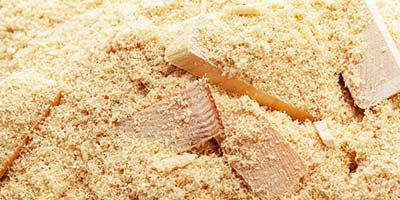Sawdust, an often overlooked byproduct of woodworking, possesses remarkable recycling potential. Its innate versatility extends beyond mere waste; it harbors numerous applications across diverse industries. This fine, powdery residue, typically disregarded, conceals within its granules a spectrum of possibilities waiting to be harnessed.
Understanding Sawdust
Sawdust recycling entails a strategic approach to repurpose this residual material derived from cutting or sanding wood. It is essential to comprehend the chemical composition and physical attributes of sawdust. Primarily composed of cellulose, hemicellulose, and lignin, this organic matter constitutes a valuable resource for various endeavors. The sawdust charcoal making machine is a good way to recycle sawdust.

sawdust
Eco-Friendly Innovations
The recycling of sawdust aligns seamlessly with eco-conscious initiatives. Through innovative techniques, this discarded residue metamorphoses into eco-friendly products. Biomass briquettes, for instance, present an eco-sensitive alternative to traditional fossil fuels. The compression of sawdust into dense briquettes creates an efficient, sustainable heating source, minimizing waste while reducing the carbon footprint. More information on wood charcoal making machine here.
Industrial Applications
Industries recognize the untapped potential residing within sawdust recycling. In construction, sawdust finds application as a component in particleboard, MDF (Medium Density Fiberboard), or insulation material. Its absorbent properties make it a suitable addition to animal bedding and oil spill cleanup. Additionally, in agriculture, it acts as a soil amendment, enhancing moisture retention and aeration.
Artisanal Crafts and Creativity
Beyond its industrial applications, sawdust recycling invigorates the realm of artisanal crafts. Mixed with adhesives or resin, compressed sawdust forms composite materials for artistic endeavors. Sculptors and artists employ this medium to craft intricate designs, adding an eco-friendly dimension to their creations. Check the rice husk charcoal making machine.
Challenges and Innovations
However, challenges persist in optimizing sawdust recycling methods. Addressing issues like moisture content, impurities, and variations in particle size demands continual innovation. Advanced technologies, including pyrolysis and torrefaction, have emerged to enhance the efficiency of sawdust conversion. Pyrolysis, for instance, decomposes sawdust in the absence of oxygen, producing biochar, bio-oil, and syngas, further broadening its utility.
Conclusion
In conclusion, sawdust recycling epitomizes the convergence of sustainability and innovation. Its versatility and adaptability across multiple sectors underscore its significance in the circular economy. As industries and individuals delve deeper into exploring inventive approaches, the potential of sawdust as a valuable resource continues to unfold, contributing meaningfully to a more sustainable future. See the biomass pyrolysis plant here.